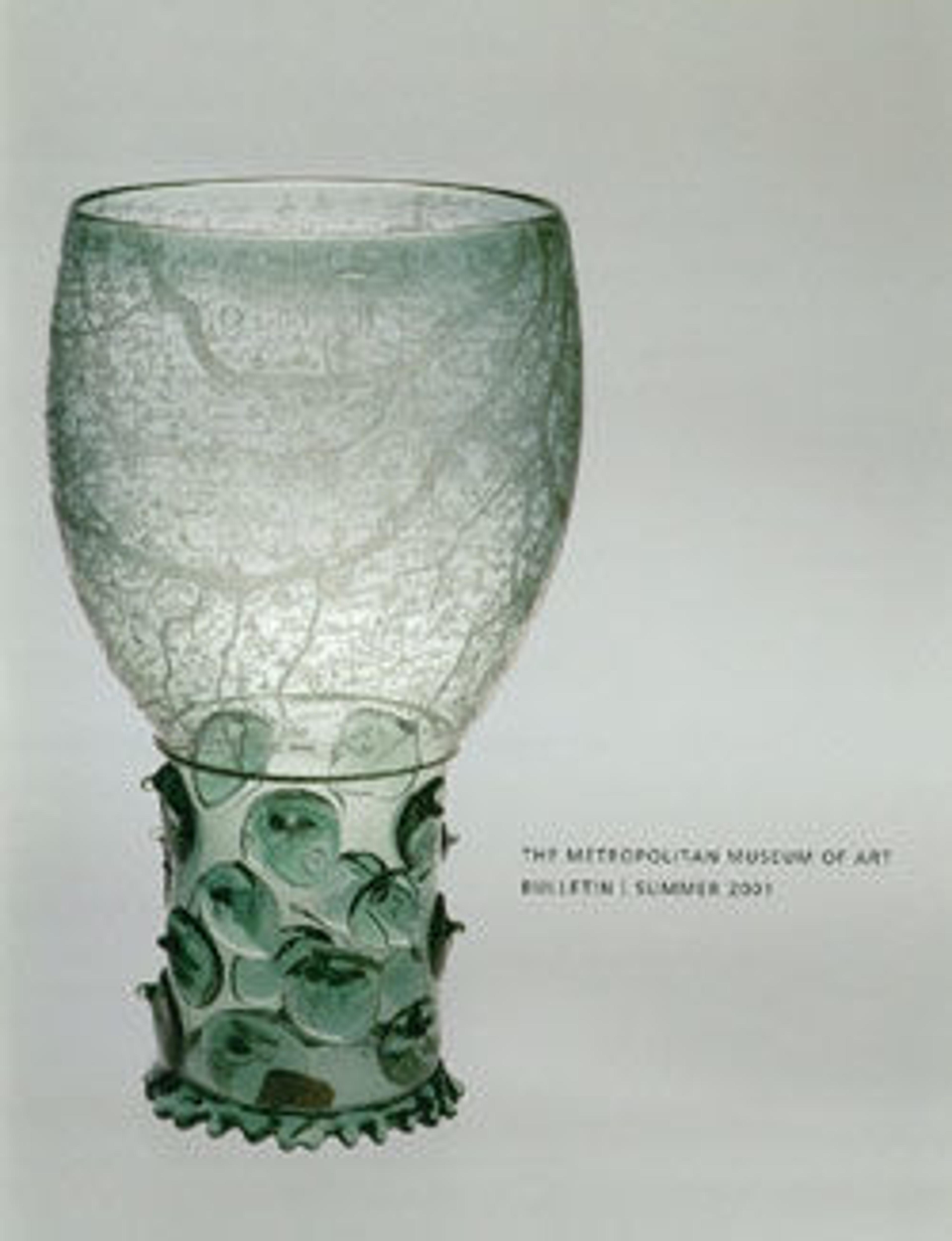Reliquary of Mary Magdalene
Reliquary of Mary Magdalene, 14th and 15th century
Made in Tuscany, Italy
Gilded copper, gilded silver, rock crystal, verre églomisé; Overall 22 x 9 3/8 x 7 15/16 in. (55.9 x 23.8 x 20.2 cm), roundel 3 3/8 in. (8.6 cm)
Gift of J. Pierpont Morgan, 1917 (17.190.504)
While their choir books were richly colored, Franciscan communities frequently chose more somber verre églomisé, a reverse-glass painting technique, for reliquaries. Although the palette of the glass medallion that crowns the reliquary is limited, the overall effect of crystal and gilded metal is sumptuous. The relic, enclosed in rock crystal, is said to be Mary Magdalene's tooth.
Made in Tuscany, Italy
Gilded copper, gilded silver, rock crystal, verre églomisé; Overall 22 x 9 3/8 x 7 15/16 in. (55.9 x 23.8 x 20.2 cm), roundel 3 3/8 in. (8.6 cm)
Gift of J. Pierpont Morgan, 1917 (17.190.504)
While their choir books were richly colored, Franciscan communities frequently chose more somber verre églomisé, a reverse-glass painting technique, for reliquaries. Although the palette of the glass medallion that crowns the reliquary is limited, the overall effect of crystal and gilded metal is sumptuous. The relic, enclosed in rock crystal, is said to be Mary Magdalene's tooth.
Artwork Details
- Title: Reliquary of Mary Magdalene
- Date: 14th and 15th century
- Geography: Made in Tuscany, Italy
- Culture: North Italian
- Medium: Gilded copper, gilded silver, rock crystal, verre églomisé, and a tooth (possibly human)
- Dimensions: 22 x 9 3/8 x 7 15/16in. (55.9 x 23.8 x 20.2cm)
Other (roundel): 3 3/8in. (8.6cm)
Other (Rock crystal vessel): 4 5/16 × 2 3/16 × 1 5/8 in. (10.9 × 5.5 × 4.1 cm) - Classification: Metalwork-Copper
- Credit Line: Gift of J. Pierpont Morgan, 1917
- Object Number: 17.190.504
- Curatorial Department: Medieval Art and The Cloisters
Audio
866. Kids: Reliquary of Mary Magdalene
0:00
0:00
We're sorry, the transcript for this audio track is not available at this time. Please email info@metmuseum.org to request a transcript for this track.
More Artwork
Research Resources
The Met provides unparalleled resources for research and welcomes an international community of students and scholars. The Met's Open Access API is where creators and researchers can connect to the The Met collection. Open Access data and public domain images are available for unrestricted commercial and noncommercial use without permission or fee.
To request images under copyright and other restrictions, please use this Image Request form.
Feedback
We continue to research and examine historical and cultural context for objects in The Met collection. If you have comments or questions about this object record, please complete and submit this form. The Museum looks forward to receiving your comments.
